Idea by
Matteo
Call for ideas 2016
ParacityRoma
ParacityRoma
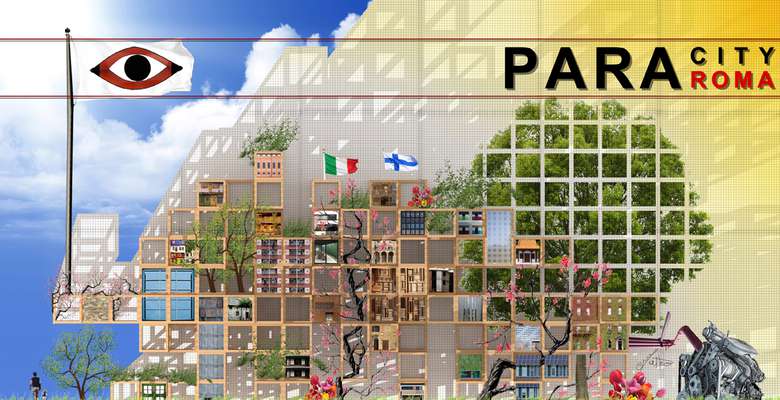
The project plans to import the pilot project “PARACITY” in Rome, by entering a cell within the experiment started by the group “G124” in the "Viaduct of the Presidents" in the outskirts of Roma Nord. Guided by architect Renzo Piano a group of young architects worked to transform and regenerate an urban space abandoned and to address the growing desire of ordinary citizens to regain possession of their territory in order to restore that dignity that has been for too long denied. The project launched small actions through interventions on the micro-scale, with the aim of reactivating energy, ideas and stimulate the local economy. In this ready-made context the "ParacityRoma" projects aims to develop its roots and give a contribuition to the development of the city.
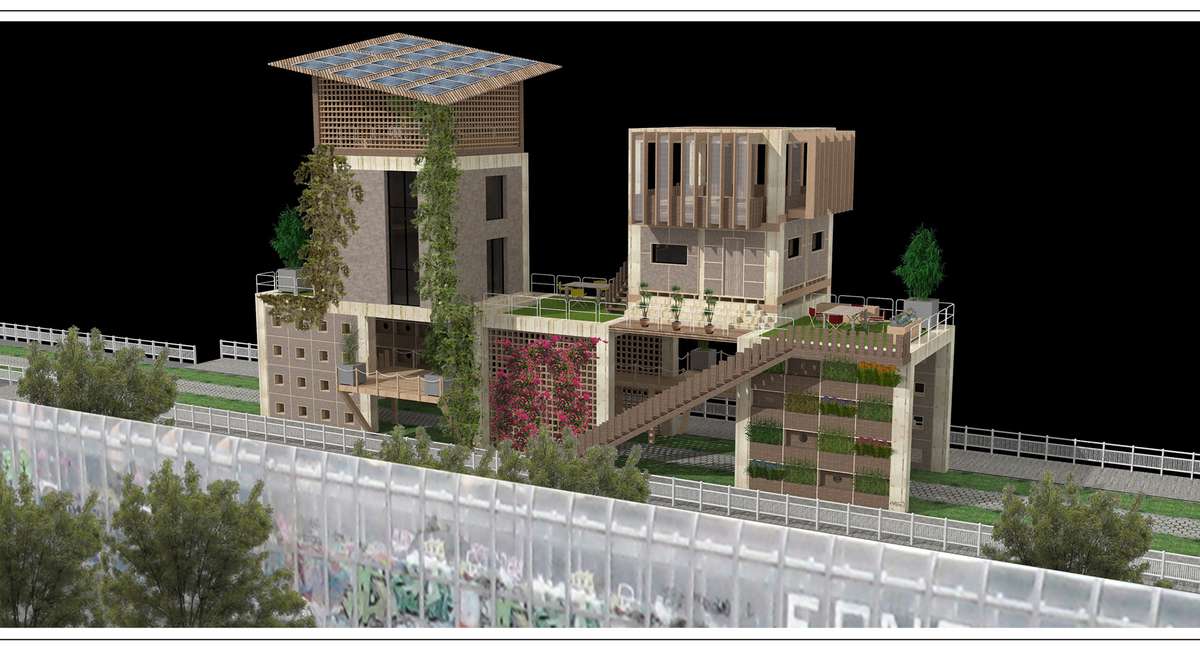
The primary structure of the space system consists of an architectonical grid, a cubic crystals of size 6m x 6m x 6m, made of laminated wood CLT.The three-dimensional grid construction, once anchored to the structures of the viaduct will be completed according to the solutions proposed by the people who will be involved in the project and working in teams and introducing architectural solutions “self-made”according to the principles of participatory architecture.
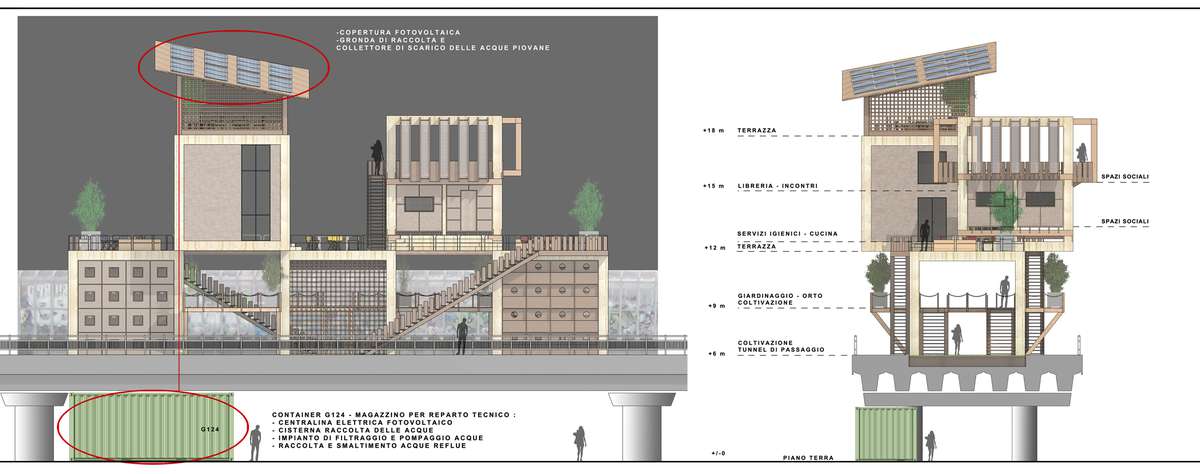
In the meanwhile vegetable gardens and urban farms self organized will develop along the viaduct and the surrounding green areas that gradually involve. The primary structure will ensure the technological equipment that will provide environmental purified rainwater, treatment of organic waste recycled through composting systems, and electricity supplied by photovoltaic panels placed in the highest part of the structure.
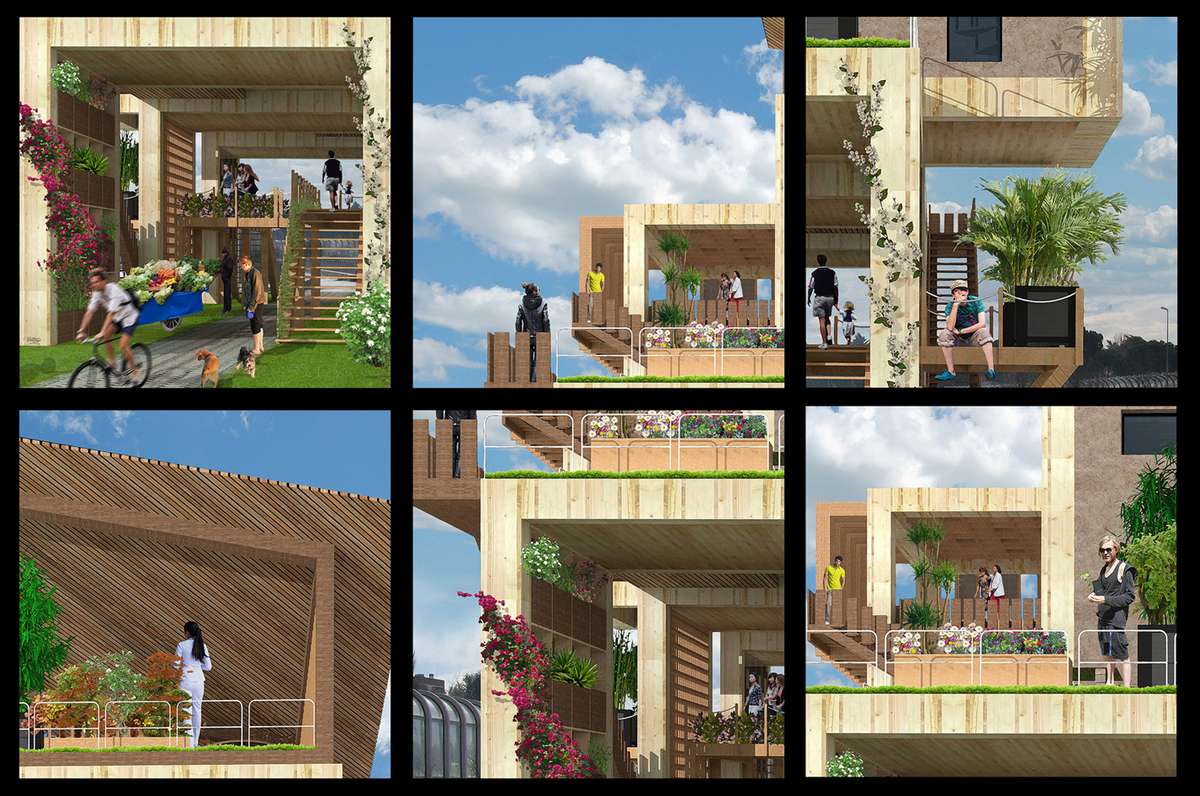
The configuration of the installed modules allows to obtain a tunnel that keeps open the passage along the viaduct. This space long 32 meters and wide 6 meters used for the cultivation and production of urban gardens, is likely to be a space for meetings, a gallery. At the height of 6 meters a large green terrace is set up and at a height of 12 meters a new small terrace. The photovoltaic roof is ment to produce the electrical power required for the basic necessities.
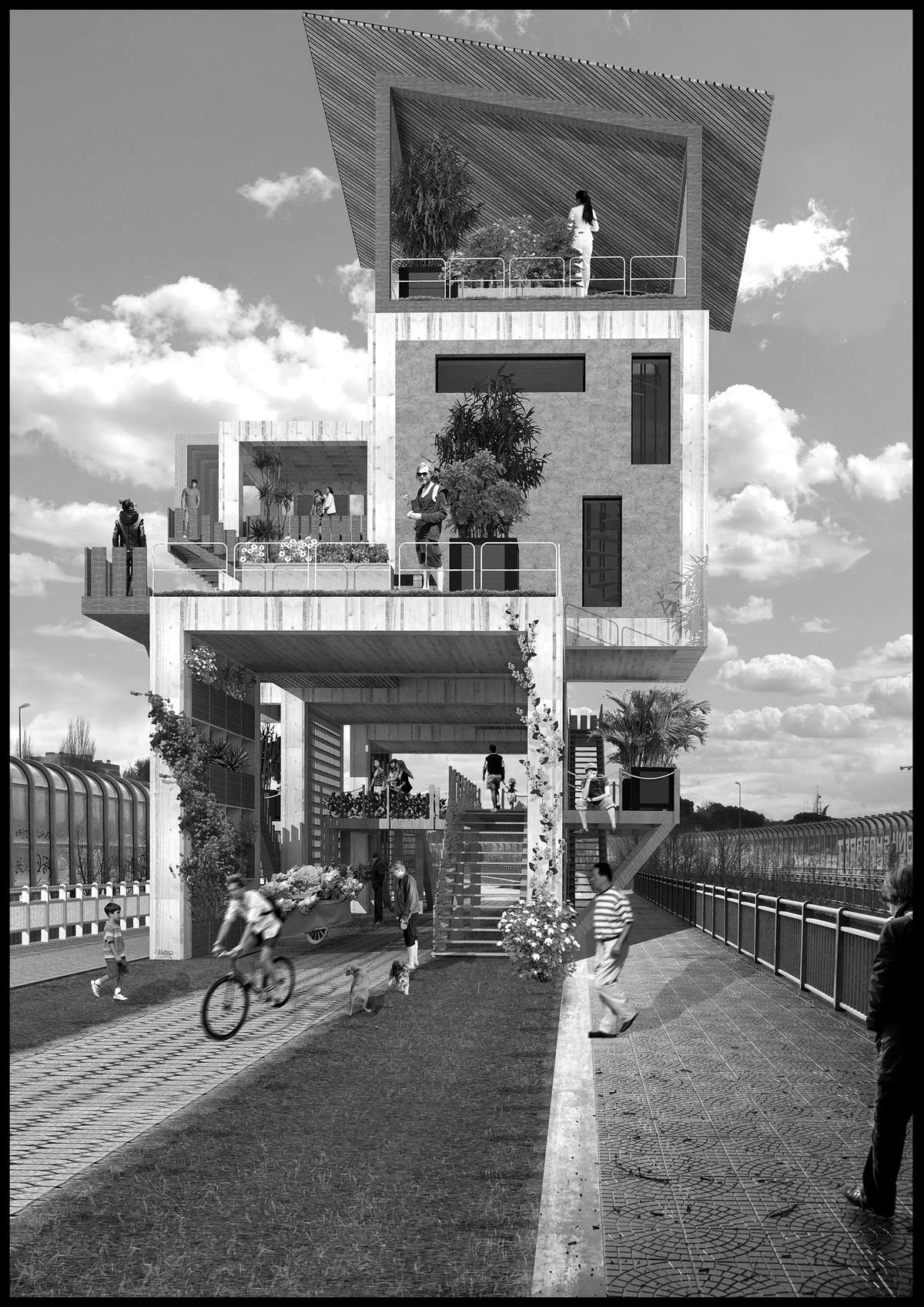
The spaces are for the most part open and simple. The facility is open, has a lot of holes, fractures that allow vegetation to grow. The system ventilates alone as a hive of insects with its natural air movements. The roof garden, the walls that allow natural growth of vegetation, the tunnel for growing urban gardens generate a complex that breathes.
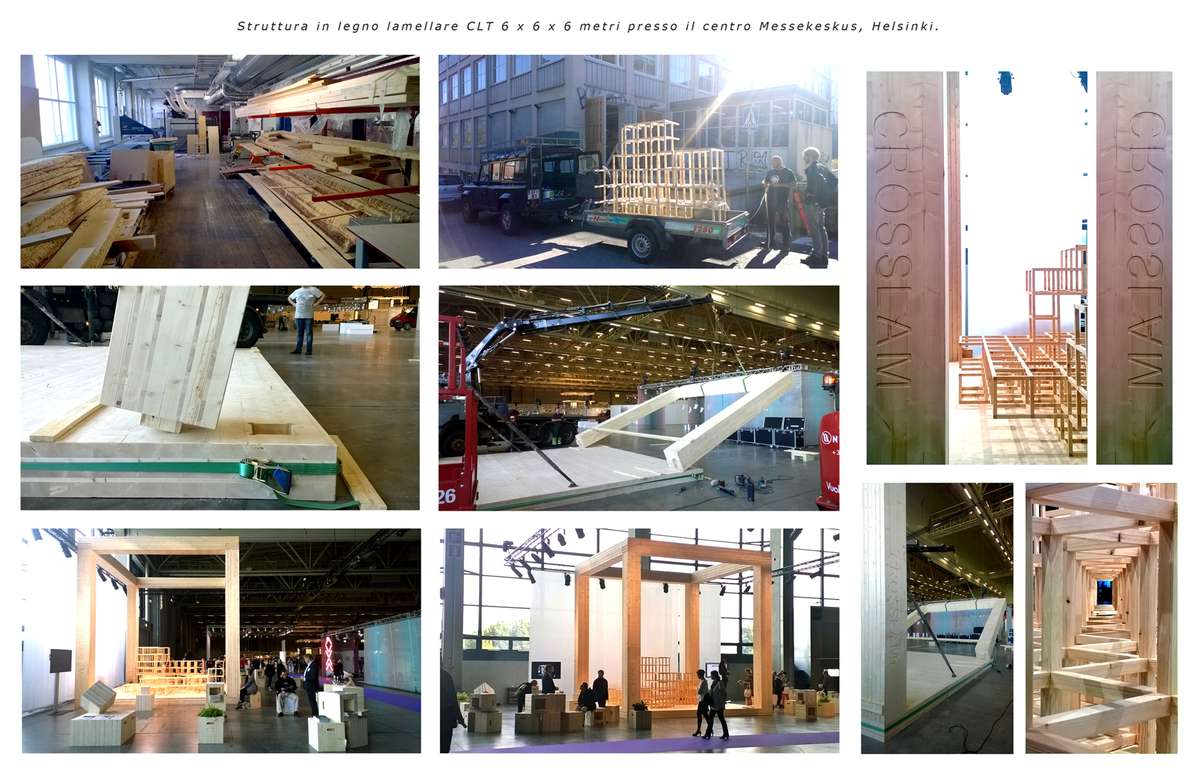
Realization and show of the supporting structure at the center of Messekeskus - Finland, Helsinki.
ParacityRoma
ParacityRoma

The project plans to import the pilot project “PARACITY” in Rome, by entering a cell within the experiment started by the group “G124” in the "Viaduct of the Presidents" in the outskirts of Roma Nord. Guided by architect Renzo Piano a group of young architects worked to transform and regenerate an urban space abandoned and to address the growing desire of ordinary citizens to regain possession of their territory in order to restore that dignity that has been for too long denied. The project launched small actions through interventions on the micro-scale, with the aim of reactivating energy, ideas and stimulate the local economy. In this ready-made context the "ParacityRoma" projects aims to develop its roots and give a contribuition to the development of the city.
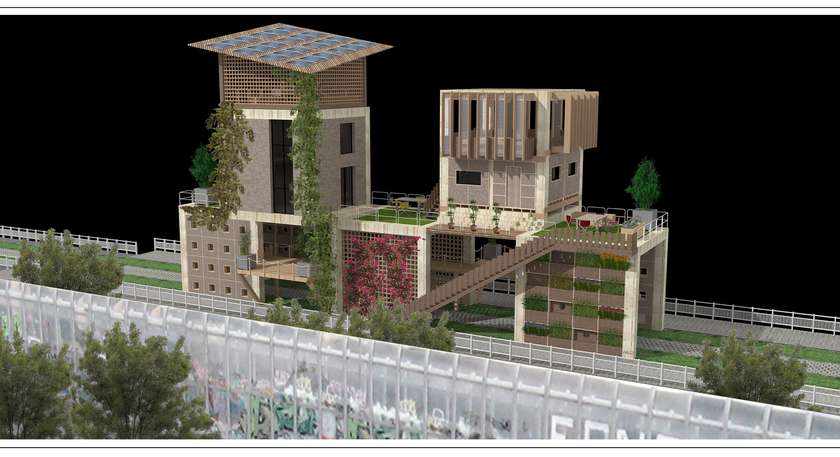
The primary structure of the space system consists of an architectonical grid, a cubic crystals of size 6m x 6m x 6m, made of laminated wood CLT.The three-dimensional grid construction, once anchored to the structures of the viaduct will be completed according to the solutions proposed by the people who will be involved in the project and working in teams and introducing architectural solutions “self-made”according to the principles of participatory architecture.

In the meanwhile vegetable gardens and urban farms self organized will develop along the viaduct and the surrounding green areas that gradually involve. The primary structure will ensure the technological equipment that will provide environmental purified rainwater, treatment of organic waste recycled through composting systems, and electricity supplied by photovoltaic panels placed in the highest part of the structure.
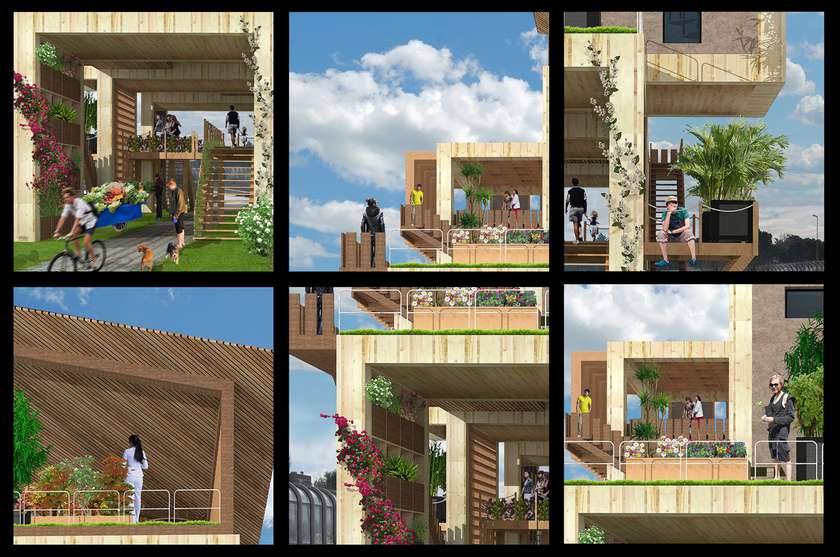
The configuration of the installed modules allows to obtain a tunnel that keeps open the passage along the viaduct. This space long 32 meters and wide 6 meters used for the cultivation and production of urban gardens, is likely to be a space for meetings, a gallery. At the height of 6 meters a large green terrace is set up and at a height of 12 meters a new small terrace. The photovoltaic roof is ment to produce the electrical power required for the basic necessities.
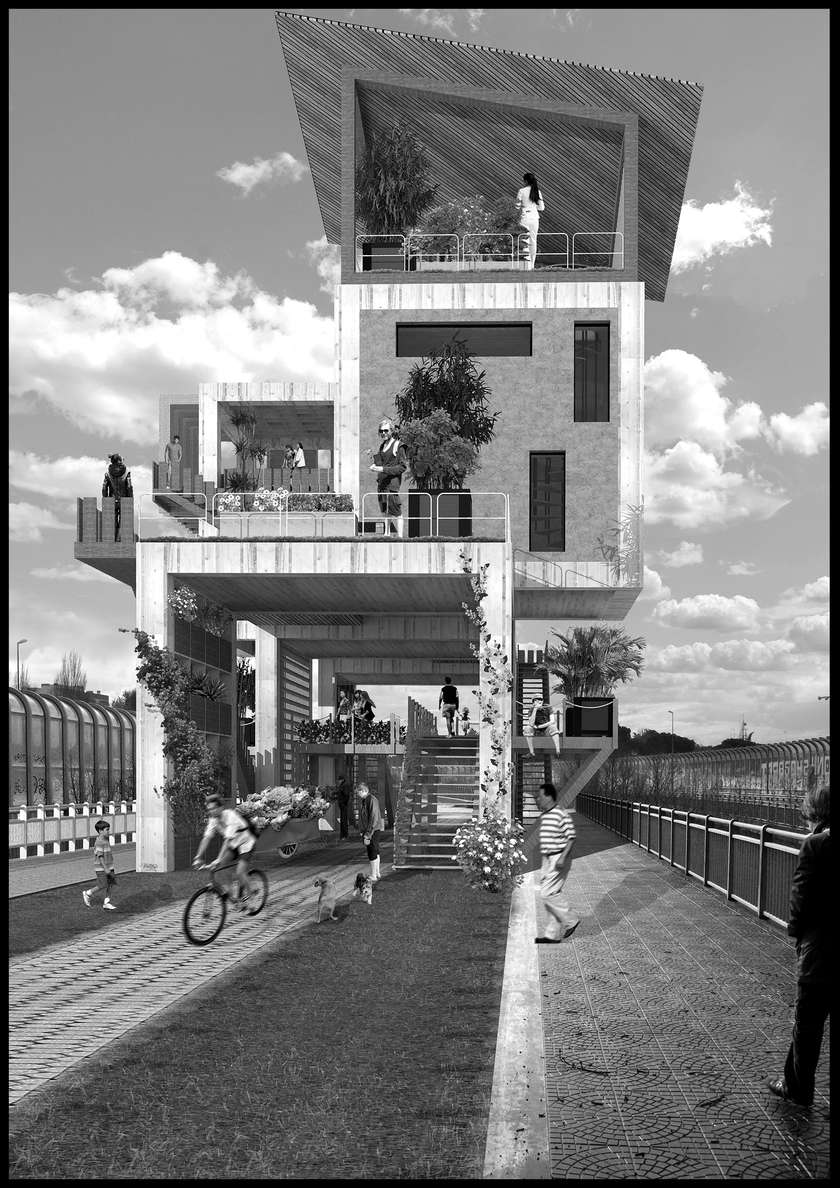
The spaces are for the most part open and simple. The facility is open, has a lot of holes, fractures that allow vegetation to grow. The system ventilates alone as a hive of insects with its natural air movements. The roof garden, the walls that allow natural growth of vegetation, the tunnel for growing urban gardens generate a complex that breathes.
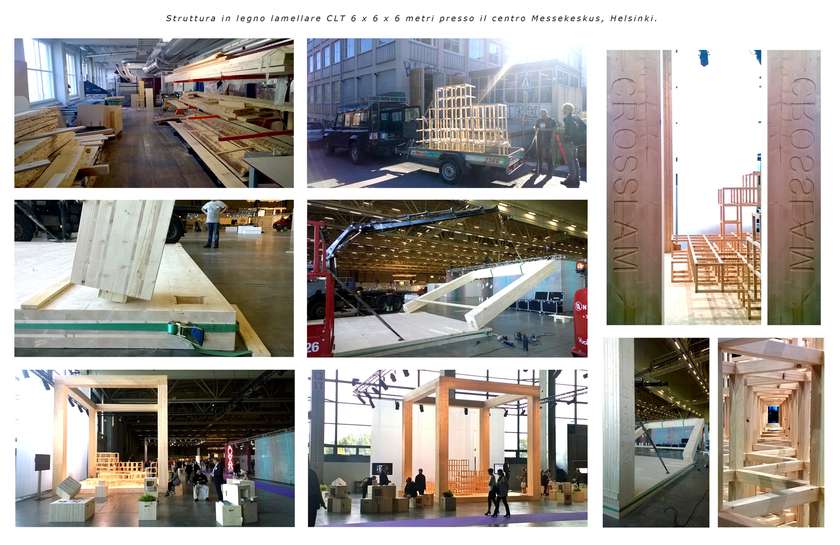
Realization and show of the supporting structure at the center of Messekeskus - Finland, Helsinki.